
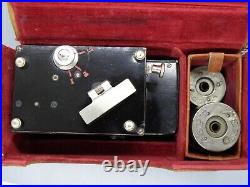
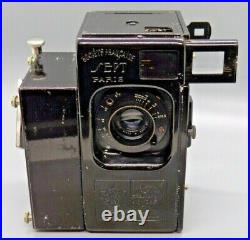
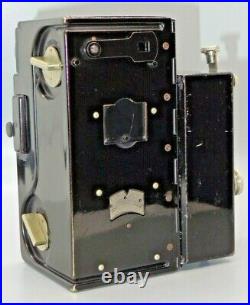
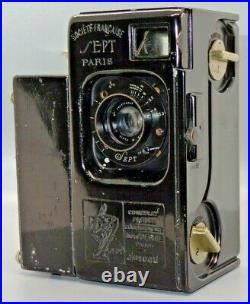
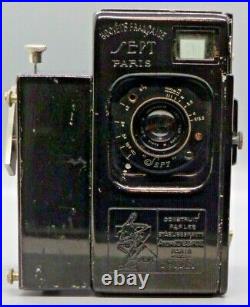

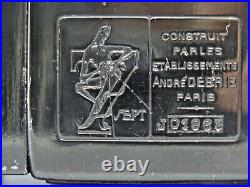

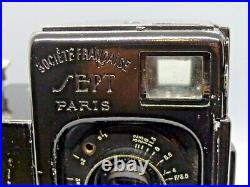
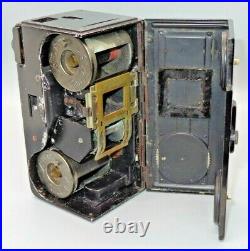
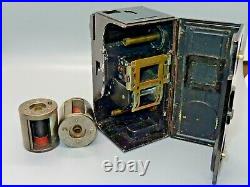


Spring Driven motor S/N# 1963 (matches camera). Original red velvet lined leather camera case. Three tin film canisters (one with film inside). Camera is mechanically sound and can be advanced manually however unit is non-working when connected to spring driven motor. That being said the spring driven motor does work perfectly when separated from housing. Needs professionally cleaned and restored but has great potential to be fully functioning once restored. History of the Debrie Sept Camera. Made from 1922 to 1927 t. He name Sept ("seven" in French) was an allusion to the seven functions of the camera: still camera, sequential camera, cine camera, still projector, cine projector, enlarger and cine transfer machine. The chase sequence in'Robin Hood' (Douglas Fairbanks, 1922) was shot using a Debrie Sept. Focusing is done through helical threaded mount. With intermittent sprocket transport and provision for single exposures. Detachable clockwork motor unit, square ended.
Film containers with light traps opened from camera exterior. Light trapped slits for printer/ projector mode. Brilliant reflecting finder with front lens which slides out to form optical frame finder. In lined case with compartment for chargers. He camera used 35mm film in five meter rolls, sufficient only for 17 seconds of filming. The film containers have light traps opened from the camera exterior. It has a detachable clockwork motor unit, square-ended, that drives an intermittent sprocket transport. The motor housing is removable and is coupled to the main body by a square key. At least two types exist: the early one is square and the late one, introduced in 1925, is rounded. The main release is placed at the top, and the camera cannot function without it. On the side, there is a large key to wind the spring motor, and a knob with three positions. Nstantané (Instant setting, about 1/60). This item is in the category "Cameras & Photo\Vintage Movie & Photography\Vintage Cameras\Other Vintage Cameras". The seller is "malloyd1" and is located in this country: US. This item can be shipped to United States.
- Model: Sept
- Country/Region of Manufacture: France
- Type: Anastigmat
- Color: Black
- Brand: Debrie

